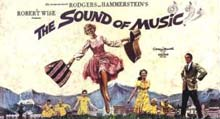Basic Teaching Techniques for Moving Images
The eight basic
techniques described on these pages are designed to
help you unravel the codes and conventions of the
moving image, and enable you to use a wider range
of film and video texts in the classroom. As you
and your pupils unpack the layers of meaning, you
will be helping them to develop their general
skills as more critical, attentive and
knowledgeable readers of the moving image.
Learning Objective
•
Most moving
image texts compete for audiences in a busy
commercial market.
• Moving image texts can be promoted in many different media.
• Marketing and promotional strategies are central to most of the moving image industries.
• Most media producers and distributors are part of larger conglomerates and can call upon a range of different companies to help promote their products.
• Audience responses are measured and fed back into future production and promotion
strategies.
• Most moving image production and distribution is expensive and risky.
• Moving image texts can be promoted in many different media.
• Marketing and promotional strategies are central to most of the moving image industries.
• Most media producers and distributors are part of larger conglomerates and can call upon a range of different companies to help promote their products.
• Audience responses are measured and fed back into future production and promotion
strategies.
• Most moving image production and distribution is expensive and risky.
Key Questions
• What
methods were used to promote this text to
audiences?
• Why were these methods used and not others?
• Who helped promote this text and why?
• Did audiences respond as the producers intended? If not, why not?
• Was media controversy deliberately fostered? Did it help or harm the text? How?
• Why were these methods used and not others?
• Who helped promote this text and why?
• Did audiences respond as the producers intended? If not, why not?
• Was media controversy deliberately fostered? Did it help or harm the text? How?
Attracting Audiences
• In pairs or groups, pupils collect information about how a text has been marketed and circulated to audiences: eg TV listings, educational resource catalogues, video catalogues, shop displays, websites, film posters, advertisements, trailers, TV ratings, cinema box office information, reviews, press releases, news items.• Groups or pairs present their findings (eg as live presentations, poster montages etc) to the rest of the class, identifying key issues affecting the success or failure of a text to find its audience and convey its message.
